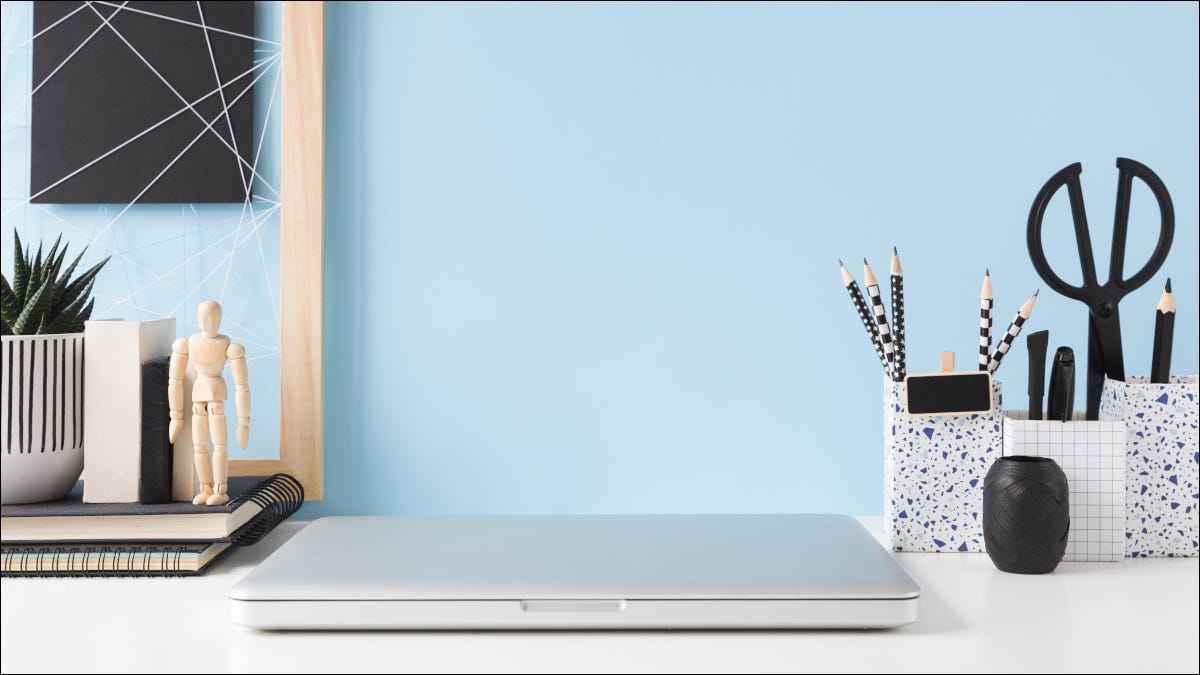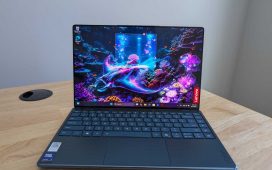
If you use your laptop with an external display docked at a desk, you may want to run it with its lid closed to save space. However, your laptop wasn’t designed to run full-tilt with a closed lid, right?
It Depends on the Laptop
The main concern when using a laptop with its lid closed is not getting adequate cooling. However, whether that’s true depends largely on the cooling design of the specific laptop. If we’re talking about the fanless, low-power M1 or M2 MacBook Air computers, it’s perfectly fine to run them this way. You can even buy special stands designed exactly for this use case.
Twelve South BookArc for MacBook
When you don’t need your MacBook’s screen at your desk and want to save as much space as possible, the BookArc is an elegant solution to your hot-desk Macbook Life.
On the other hand, if you have a workstation or gaming laptop, there’s a good chance that the top deck of the laptop plays a role in ventilation. If you close the lid, it can affect airflow. Some laptops are designed to lift the bottom of the laptop off the surface of your desk when the screen opens. With this type of design, running the system with the lid closed is not a good idea.

If you’re unsure, check with the manufacturer whether they condone running the system under load with the lid closed.
Heat Can (Theoretically) Damage LCDs
Even if your laptop can adequately cool its CPU and GPU with the lid closed, another consideration is whether the LCD panel could be damaged by being close to the hot laptop body during operation.
Like any electronic device, LCD panels have a maximum safe operating temperature. The exact numbers differ from one device to the next but are typically between 40C and 60C, based on the specifications we’ve read. Since a closed laptop screen traps a layer of air between itself and the laptop body, it’s conceivable that the temperature in that gap can reach the point where it affects the lifespan of the liquid crystals or the screen’s coating.
Of course, it’s difficult to state conclusively that the heat from your high-performance laptop will damage the laptop’s LCD in either the short or the long term. However, it stands to reason that subjecting an LCD to temperatures outside the room-temperature range it was designed for is a bad idea.
What About Cooling Pads?
Cooling pads are popular as laptop stands with integrated cooling fans and vents. The idea is that they remove heat from the laptop through its vents and body so that the internal fans don’t have to work as hard.
In theory, this isn’t a bad idea, but much depends on the exact cooling design of your laptop and the cooling pad. Even then, cooling pads offer relatively small drops in temperature, and they’re not helping cool the gap between your screen and laptop body directly.
Running Your Laptop Overnight or as a Server
Some users aren’t looking to run a laptop with its lid closed while attached to an external display. For example, you might be using your old laptop as an in-home server or leaving a rendering job or download to run overnight.
Assuming you’ve made sure any vents aren’t blocked (and enabled it to run while the lid’s closed), you can leave the laptop running with the lid closed if it’s only doing medium or low-intensity work that won’t heat it up much.
However, you can go the middle way and close the lid just enough to switch off the screen, but not enough to close the laptop entirely. As long as hot air isn’t venting directly onto the screen, this should work indefinitely. However, it won’t do much to keep dust out, so be prepared to clean your laptop regularly.
Is This Really a Problem?
If your laptop is overheating or throttling its performance when you have the lid closed, then that’s clearly an issue, and you should strongly consider opening the lid to prevent this from happening. If you’re mainly worried that heat exposure will ruin your laptop screen, there’s no clear evidence we could find that this is the case. Anecdotally we’ve run laptops with their lids closed for years and have never experienced a display failure that could be directly linked to heat. That said, it’s impossible to rule it out entirely.
Ultimately, the only safe option is to run your laptop with the lid open. Besides, this offers a second screen if you’re using an external monitor, which is almost always more useful than only having a single display. Then again, running your laptop with the lid closed has serious aesthetic and space-saving benefits, so the tradeoff depends on how much you value form over function, or what specific job you need your laptop to do.











